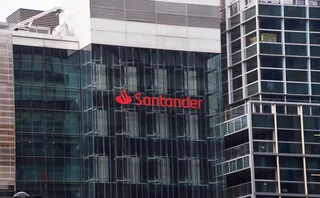
CROs respond to Swedish stress tests
Chief risk officers have given muted support to the recent stress-testing exercise by Swedish regulator Finansinspektionen to assess whether the country's largest banks have enough capital to survive future stresses.
Under the conservative base scenario, it was assumed that bank lending would continue to increase over the period, albeit at a lower rate than the past few years, and banks would incur losses of Skr202.6 billion ($25.31 billion) compared with total earnings of Skr296.1 billion.
In a second scenario, which envisaged extreme stress in eastern Europe (especially in the Baltic region, where Swedish banks have lent heavily), rising unemployment, a huge fall in demand, and no new loans being originated, the level of earnings was predicted to remain constant with losses rising to Skr249.2 billion.
The third, and most stressed scenario, factored in extreme stress in eastern Europe, as well as a prolonged recession in western Europe. In this scenario, credit losses would rise to Skr350 billion and earnings would fall to Skr260.3 billion.
The results of the tests have, in general, been viewed positively by the banks involved. “The tests strike a good balance between a satisfyingly good stress scenario and not pushing the parameter to the point of impossibility with the extreme scenario. In general, the banks feel they are tough but fair,” said Philip Winckle, Stockholm-based head of group credit risk control at SEB.
Perhaps the main reason for the positive response from banks is that the loss expectations under the different scenarios are roughly in line with their own estimates. Rolf Marquardt, chief risk officer at Svenska Handelsbanken in Stockholm, told Risk Finansinspektionen's assumptions were “not far off” the results of its own stress tests.
However, some discrepancies were noted between the assumptions used by the regulator and those used by the banks. Marquardt explained the regulatory scenarios are “less applicable” to Handelsbanken because they have a heavy focus on losses in the Baltic countries, where the bank has only a minor exposure in that region, of approximately Skr2 billion.
For proprietary reasons, Marquardt could not disclose the full list of scenarios employed in Handelsbanken’s stress tests, but said two scenarios are based on the Swedish financial crisis of the 1990s and an extended deflationary period, such as that experienced by Japan in the same decade.
Winckle said that “in the absolute stressed scenario there was no big divergence [between SEB’s scenarios and the regulators’] because we use aggressive parameters. But we would never call its first scenario a base case”.
The severity of the base scenario also aroused debate at other Swedish banks. “We have been asked by management and board directors if it is in fact a forecast, and if it is, we don’t believe it is a fair forecast. I would think of a base case as the best estimate for the year. Instead I view this as a mild stress scenario,” Winckle noted.
Other concerns have also arisen. “We think the tests were excessive in that the average loss rates are only appropriate for banks with a variety of size of counterparties. If a bank had a portfolio of exposures to small, medium and large corporates, it would have been appropriate. However, Nordea and SEB mainly have exposures to large corporates with better risk grades, and that hasn’t been taken into account,” Winckle argued.
Overall, Marquardt believes the stress tests were a useful exercise, despite their limitations. “It is hard to know how large credit migrations will be and how demand for capital may develop. We think the regulators’ estimates are as good as can be; these kinds of tests are not an exact science,” he remarked.
But Winckle feels the tests would have been more accurate had the regulators factored in more than publicly available data, which does not give a complete picture of a bank’s overall portfolio. “We know our portfolio contains a mixture of exposures, and it hasn’t taken full account of that,” he says.
See also: Sweden's $202 billion guarantee fails to help markets
Pressure points
FSA stress tests banks for four-year downturn
Only users who have a paid subscription or are part of a corporate subscription are able to print or copy content.
To access these options, along with all other subscription benefits, please contact info@risk.net or view our subscription options here: http://subscriptions.risk.net/subscribe
You are currently unable to print this content. Please contact info@risk.net to find out more.
You are currently unable to copy this content. Please contact info@risk.net to find out more.
Copyright Infopro Digital Limited. All rights reserved.
As outlined in our terms and conditions, https://www.infopro-digital.com/terms-and-conditions/subscriptions/ (point 2.4), printing is limited to a single copy.
If you would like to purchase additional rights please email info@risk.net
Copyright Infopro Digital Limited. All rights reserved.
You may share this content using our article tools. As outlined in our terms and conditions, https://www.infopro-digital.com/terms-and-conditions/subscriptions/ (clause 2.4), an Authorised User may only make one copy of the materials for their own personal use. You must also comply with the restrictions in clause 2.5.
If you would like to purchase additional rights please email info@risk.net
More on Risk management
As supplier risk grows, banks check their third-party guest lists
Dora forces rethink of KRI and RAF frameworks amid reappraisal of what constitutes a key counterparty
Dora flood pitches banks against vendors
Firms ask vendors for late addendums sometimes unrelated to resiliency, requiring renegotiation
Quant Finance Master’s Guide 2025
Risk.net’s guide to the world’s leading quant master’s programmes, with the top 25 schools ranked
Regionals built first-line defences pre-CrowdStrike
In-business risk teams vary in size and reporting lines, but outage fears are a constant
Op risk data: Santander in car crash of motor-finance fail
Also: Macquarie fined for fake metals trade flaws, Metro makes AML misses, and Invesco red-faced over greenwashing. Data by ORX News
Public enemy number one: the threat to information security
Nearly half of domestic and regional banks report risk appetite breaches amid heightened sense of insecurity
Credit risk transfer, with a derivatives twist
Dealers angle to revive market that enables them to offload counterparty exposures, freeing up capital
Op Risk Benchmarking 2024: the banks
As threats grow and regulators bore down, focus shifts to the first line







